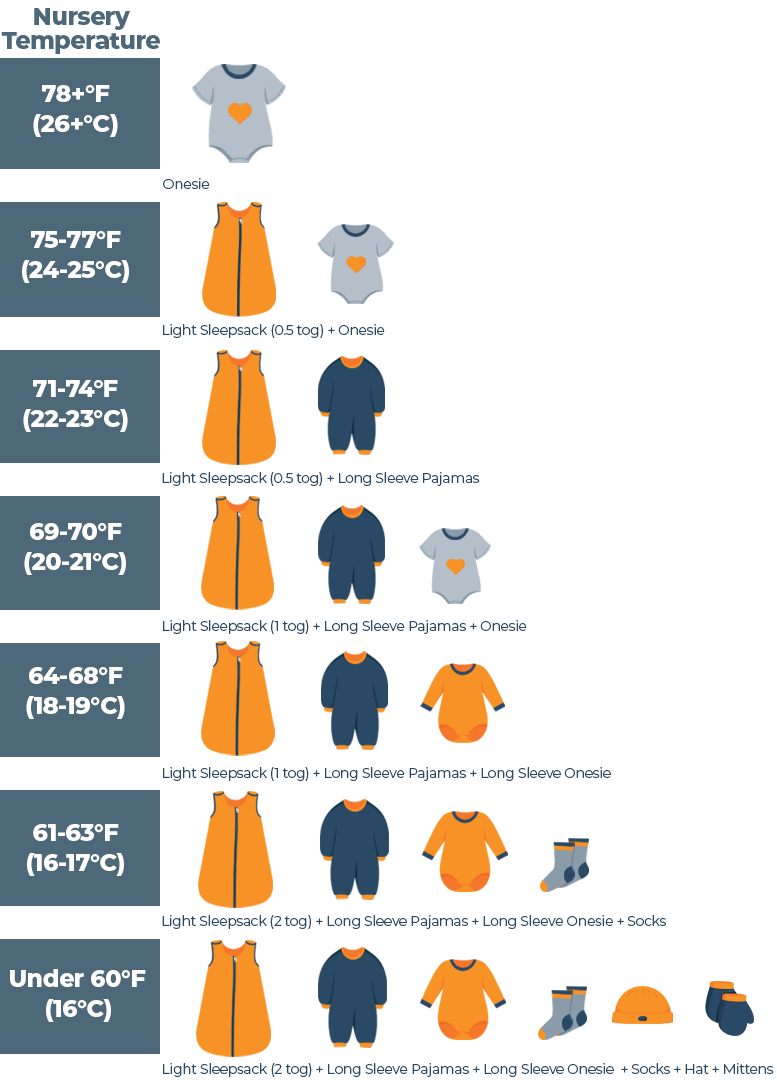Baby blankets are often a childhood staple, but as with most things that come with caring for babies, it’s important to understand vital safety precautions, particularly when it comes to sleep.
Though you may want to give your newborn baby a cozy blanket to sleep with, softer objects like bedding have been linked to an increased risk of sudden infant death syndrome1 (SIDS), especially in the early months of a baby’s life.
The good news is that all those handmade gifts didn’t go to waste, and yours won’t either. If you’re wondering, “When can my baby sleep with a blanket?” keep reading. We’ll go over this and various other sleep safety tips for babies.
Baby Sleeping With a Blanket: Is it Safe?
During pregnancy, you may have dreamt of tucking your little one into bed each night. While a comforting bedtime routine is important, the American Academy of Pediatrics (AAP)2 suggests that you keep your baby’s crib free of blankets and other items such as pillows and toys.
These guidelines are based on research that soft objects in a child’s sleeping area could lead to suffocation, strangulation, and an increased risk of sudden infant death syndrome (SIDS)1. Once your baby is at least one year old, you can introduce a blanket, but it’s still best to consider safety. We suggest that you start with something small, lightweight, and breathable.
Connection Between Blankets and SIDS
Every year, more than 3,600 infants die from sudden, unexpected causes, including SIDS, suffocation, and strangulation, according to the Centers for Disease Control and Prevention (CDC)3. The exact cause of SIDS is unknown, but factors like genetic changes, birth defects3, and environmental stressors (such as cigarette smoke) may play a part4.
Normally, if we have trouble breathing at night, our bodies signal us to wake up and get oxygen, but some babies may have brain development issues5 that impact this. As such, they may not wake up and cry if they’re not getting enough oxygen. Further, even if a baby is able to wake up, they probably won’t know how to remove the blanket that’s obstructing their breathing.
In order to keep your baby safe and lower the risk of SIDS, the only items that should be in the crib are a tightly fitted sheet, your baby, and a sleep sack (if needed)2.
When Can Babies Start Sleeping With Blankets?
After your baby turns one year old, you can consider introducing a blanket. Keep in mind that there is still a slight risk of suffocation with large and thick blankets, as well as blankets that contain ribbons and strings. Babies and toddlers move around a lot while sleeping, so one of the safest options to use through toddlerhood is a sleep sack, which we’ll touch more on momentarily.
Learn More: Parent’s Guide to a Child’s Sleep
Transitioning from Sleep Sacks to Blankets
Sleep sacks are sleeveless, wearable blankets6 for babies that look like sleeping bags with arm holes. They typically include a zipper or snap buttons, come in different fabrics, and range in sizes from preemie to toddler.
Sleep sacks are a great option in order to provide warmth or general comfort for your child, without the risks associated with regular blankets. The sleep sack won’t move and cover your baby’s face, so the risk of suffocation decreases immensely6. Not only that but babies can also suffocate by rolling over and being stuck on their stomachs. When in a sleep sack, your child’s arms are free, so if they do roll onto their stomach, they can use their arms to help themselves roll over onto their back6.
Once your toddler has outgrown the largest sleep sack size or simply refuses to wear their sleep sack, you can transition them to a lightweight, breathable blanket.
Extra Baby Sleep Safety Tips
Along with not using a blanket until your baby is at least one year old, there are some other sleep guidelines that are important for safety.
Keep the Crib Free of Pillows, Toys, and Other Objects
The AAP advises that no soft objects, including pillows, toys, and stuffed animals, should be in the crib where your infant is sleeping2. This way, there are fewer items that could harm your baby.
Never Let a Baby Sleep on a Couch
Couches, sofas, and armchairs are extremely dangerous places for babies to sleep because of the risk of falls, strangulation, and suffocation3. Make sure your baby is always sleeping in a crib or bassinet.
Baby Should Sleep on a Firm Surface
If you’re looking for a crib mattress for your baby’s crib, try to find a firm mattress7. When you press down on a firm mattress, it is responsive and quick to return to its original shape, which is safe for babies because they shouldn’t become strangled or suffocated within the materials7.
Put Baby to Sleep in a Crib
As mentioned, the safest place for your baby to sleep is a crib or bassinet, not a bed, couch, chair, or other surface. If your baby falls asleep somewhere other than the crib or bassinet, it is best to move them to a safe place as soon as possible.
Even if your baby falls asleep in their car seat or stroller, try to move them to a crib or bassinet as these are safer options7.
Establish a Consistent Bedtime Routine for Your Baby
Establishing a consistent bedtime routine for your baby will signal to them that it is bedtime and hopefully help them fall asleep more easily. Reading a bedtime story, rocking them in a rocking chair, using a sound machine, or singing a lullaby are all activities you can incorporate into your bedtime routine.
Share a Room, Not a Bed
For the first year of life, babies should sleep in the same room as their parents but in their own sleeping space, like a crib or bassinet. Room sharing allows parents to monitor their baby at night, and it is also far safer than parents sharing a bed with their baby7.
Get More Info: Safe Co-Sleeping With Your Baby
Use a Pacifier
Offering a pacifier at naptime and bedtime can help to reduce the risk of SIDS, even if it falls out after your baby falls asleep. A 2020 study8 found that “pacifier use during sleep may improve autonomic control of breathing, airway patency, or both”, which thereby reduces the risk of suffocation associated with SIDS.
How to Dress a Baby for Naps or Sleep
If you’re worried about your infant getting cold without a blanket, you can dress them in layers or use a sleep sack. You can use this guide to help you choose their sleeping outfit based on the temperature of the baby’s room:
Put Baby on Their Back to Sleep
The AAP recommends that parents place infants on their backs for naps and bedtime2. This suggestion is due to the fact that parents used to place newborns on their stomachs for sleep, and many newborns died from SIDS. We also don’t recommend side sleeping and using crib positioners since babies can easily roll onto their tummies.
Once your baby is rolling proficiently in both directions, you can continue to place them on their back to sleep, but don’t need to worry if they roll onto their stomach during the night; they’re able to move from stomach to back on their own. It’s also important to stop swaddling before your baby learns to roll over because a baby’s arms are constricted in a swaddle, so they wouldn’t be able to roll themself from their stomach to their back.
Swaddling You Baby
Swaddling your baby is another great alternative to using a blanket if your baby dislikes using a sleep sack. According to Pampers9, swaddling a baby is when you tightly wrap your baby in a blanket, with their arms to their sides. Swaddling not only keeps your baby warm, but it is soothing, especially for newborns who are used to being in the womb9.
However, once your baby learns to roll over, you should stop swaddling them. This way, if your baby rolls onto their tummy, their arms aren’t stuck in the swaddle, and they can push themselves back onto their back. You can move your child to a sleep sack if you still want to provide them with a comforting blanket-like feel once they can roll over.
Get More Info: Sleep Sack or Swaddle Blanket – Which One Should You Get for Your Baby?
Additional Considerations
- Place the crib mattress at the appropriate level: As your baby grows, it’s important to lower the crib. You’ll want to start lowering it by one notch once they’re sitting up, and it should be in its lowest position when your toddler can pull up on their own. Lowering the crib mattress helps reduce the risk that your child will climb or fall out of their crib.
- Choose the placement of the crib carefully: It’s important that the crib is away from any artwork, hanging cords or blinds, electrical outlets, or any other objects that could be reached once your baby is mobile.
- Baby-proof the room: Babies learn to climb out of their cribs long before most parents think. Be proactive, and baby-proof ahead of time. Examples of baby-proofing are removing breakable objects and covering outlets.
Frequently Asked Questions
How do I keep my baby warm without a blanket?
To keep your baby warm without a blanket, we recommend layering the baby’s clothes or using a swaddle or sleep sack. Swaddles are a good choice for newborns, and as your baby grows and learns to roll over, you can switch to using a sleep sack where their arms are free.
When can a baby sleep with a stuffed animal?
Your baby should not sleep with stuffed animals until they are at least one year old2. However, if you prefer to be even more cautious, wait to introduce stuffed animals at night until your child moves from a crib to a traditional bed.
When can babies sleep with a pillow?
Like stuffed animals, your child shouldn’t use a pillow until they are at least one year old2. Again, to err on the side of caution, we suggest that your child doesn’t use a pillow until they’ve moved into a bed.
Final Words of Advice
Learning all of the rules about your baby’s safety and sleep can be overwhelming and scary. Although every person parents their child differently, it is important to consider the safety risks associated with some sleep accessories.
While you may want your baby to be snuggled up and cozy in a blanket, it’s better to wait until your baby is at least one year old to introduce a blanket into their bedtime routine. In the meantime, swaddles and sleep sacks are a great way to keep your baby warm and comfortable while they sleep. If you still feel unsure, though, we advise consulting with your pediatrician for additional guidance.
More Reading:

Emma Cronan
Writer
About Author
Emma is an Editorial Intern for Sleep Advisor. She collaborates with the editor and staff writers to come up with article ideas, create article outlines, and write for the website.
Combination Sleeper
References:
- “Recommendations Revised To Prevent Infant Deaths from Soft Bedding”. United States Consumer Product Safety Commission. https://www.cpsc.gov/Newsroom/News-Releases/1999/Recommendations-Revised-To-Prevent-Infant-Deaths-from-Soft-Bedding#:~:text=Soft%20bedding%20may%20be%20a,on%20top%20of%20the%20baby. 1999.
- “Tips for Keeping Infants Safe During Sleep From the American Academy of Pediatrics”. American Academy of Pediatrics. Webpage accessed July 24, 2024. https://www.aap.org/en/news-room/news-releases/aap/2020/tips-for-keeping-infants-safe-during-sleep-from-the-american-academy-of-pediatrics/.
- “Sudden Unexpected Infant Death and Sudden Infant Death Syndrome”. Centers for Disease Control and Prevention. Last modified March 8, 2024. https://www.cdc.gov/sids/data.htm.
- “What causes SIDS?”. National Institute of Child Health and Human Development. Last modified January 31, 2017. https://www.nichd.nih.gov/health/topics/sids/conditioninfo/causes.
- “Sudden Infant Death Syndrome (SIDS)”. Nemours Kids Health. Last modified July 2022. https://kidshealth.org/en/parents/sids.html#:~:text=If%20a%20baby%20is%20breathing,cry%20to%20get%20more%20oxygen.
- “Are Sleep Sacks Safe for Babies?”. Cleveland Clinic.https://health.clevelandclinic.org/sleep-sack-safety/#:~:text=A%20sleep%20sack%20is%20basically,move%20freely%20without%20any%20restrictions. 2022.
- “Safe Sleep Environment for Baby”. National Institute of Child Health and Human Development. Webpage accessed July 24, 2024. https://safetosleep.nichd.nih.gov/reduce-risk/safe-sleep-environment.
- Smith, Ryan W., Colpitts, Melanie. “Pacifiers and the reduced risk of sudden infant death syndrome”. National Library of Medicine. https://www.ncbi.nlm.nih.gov/pmc/articles/PMC7286729/#:~:text=As%20outlined%20in%20the%20review,to%20less%20risk%20of%20SIDS. 2020.
- “How to Swaddle Your Baby”. Pampers. Last modified September 6, 2020. https://www.pampers.com/en-us/baby/sleep/article/how-to-swaddle-a-baby.

